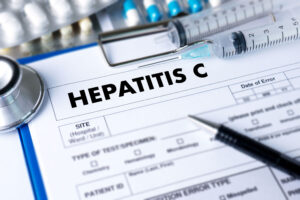Editor’s Note: This op-ed was originally published on STAT on July 14, 2023.
Congress faces a historic opportunity to stamp out a disease that kills thousands of Americans each year and save billions of dollars to boot.
In March, the Biden administration proposed an initiative to eliminate hepatitis C in the United States — a plan that should make sense to both conservatives and progressives. With colleagues, we estimated that the initiative will avert 20,000 cases of cancer, 49,100 cases of diabetes, and 25,000 cases of chronic kidney disease over 10 years. It will save 24,000 lives.
The administration is asking for $12.3 billion over five years to fund the initiative: $7.2 billion in new money and $5.1 billion reallocated from other programs. Although this figure might initially give pause to deficit hawks, our analysis demonstrates that over 10 years, the savings in health care costs will reach $18.1 billion, with the federal government’s share amounting to $13.3 billion. Roll the impact out 20 years, and the health benefits will more than double and the costs savings will triple.
Of course, skeptics must be persuaded that all that up-front money can really eradicate such a pernicious disease. After all, highly effective pills — with a cure rate exceeding 95% — have been available for almost 10 years, but only 1 in 3 hepatitis C patients have been cured. As a result, more than 2 million Americans had chronic hepatitis C in 2020 and, and about 14,000 died from its complications.
The cure was costly when it first became available — as much as $94,500 per patient — which led Medicaid and other payers to restrict access to the pills by requiring advanced liver disease as a pre-condition for treatment or by imposing high cost-sharing requirements for patients. However, now hepatitis C treatment is in the range of $20,000 per person, which makes the treatment cost-saving. However, treating thousands of patients requires upfront investment.
Additionally, the viral assault on the liver can progress silently, exhibiting no symptoms, leaving as many as 40 percent of infected individuals unaware of their affliction. Moreover, hepatitis C hits hardest among people least able to get medical care, including the uninsured, the incarcerated, and injectable drug users.
The national initiative takes aim at all those impediments. It would install a national “subscription model” for purchasing the hepatitis C pills that was endorsed by a National Academies of Sciences, Engineering, and Medicine Committee (of which one of us, Neeraj, was a member). The federal government would transition from paying a price for each pill to paying one price for all pills. Manufacturers would bid to win the massive contract. The winning drug company would recoup research costs while the government would leverage market competition and low manufacturing costs to drive down spending. Medicaid, prisons, and the Indian Health Service would see access jump under the model without breaking the bank. The model could also serve as a blueprint for purchasing many other expensive drugs, including promising weight loss treatments in the battle against diabetes.
Hepatitis C disproportionately affects baby boomers, who are flooding into Medicare. Unfortunately, the hepatitis C cures are still too expensive for many Medicare beneficiaries as the out-of-pocket costs average about $4,000. The president’s initiative also introduces a copay assistance program that reduces Medicare out-of-pocket costs to zero. This will not only enhance the health and finances of seniors but also makes economic sense by reducing downstream Medicare bills for liver transplants, complications of liver disease, diabetes, and chronic kidney disease.
To find the people carrying the virus, the initiative would accelerate development of rapid tests, similar to the tests the government subsidized for Covid-19. Once they are available, the tests could be deployed to “test and treat” locations where people could be tested and initiate a cure in one visit. Currently, accessing cures requires doctors to order two tests, and many patients are lost while doctors wait for test results. The initiative would also fund a public health campaign to increase disease awareness and interventions to get primary care doctors involved in hepatitis C treatment.
That strategy has proven vital to driving down hepatitis C rates elsewhere. The World Health Organization has committed to eliminating viral hepatitis by 2030, and a number of countries including Egypt, Mongolia and Rwanda are well on their way. The fact that such resource-challenged countries have leapfrogged the U.S. should be a wake-up call to Congress.
It is possible to eliminate hepatitis C as a public health threat in the U.S. while saving the government billions of dollars. It will require putting aside short-run views of deficit reduction. As our projections show, not all spending adds to the federal deficit. Pass this initiative, and there will be plenty of credit to go around when lives are saved and health care costs recede.
Neeraj Sood is a senior fellow at the USC Schaeffer Center for Health Policy & Economics and a professor at the USC Price School of Public Policy. Jagpreet Chhatwal is director of the Institute for Technology Assessment at Massachusetts General Hospital and associate professor at Harvard Medical School.
Sign up for Schaeffer Center news

